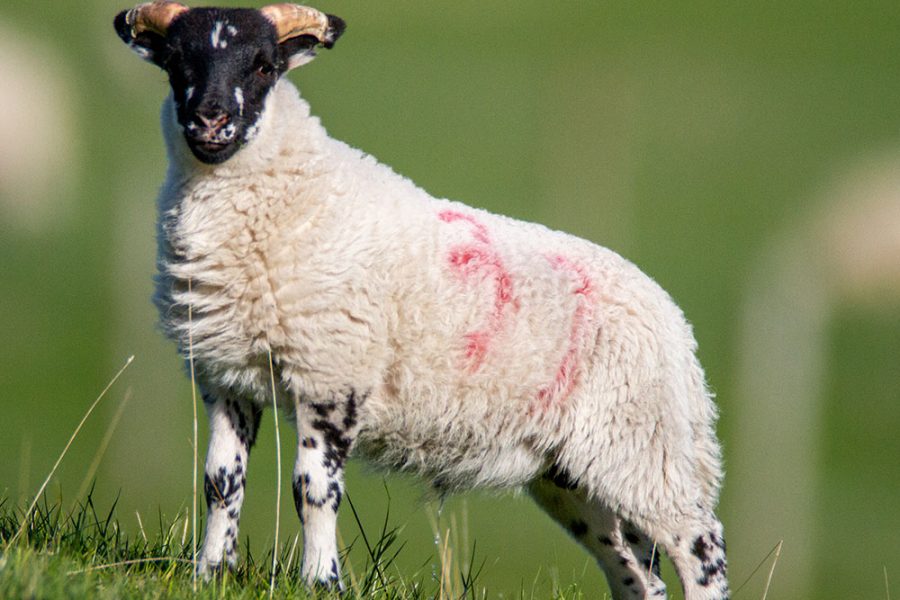During a recent county fair in California, a little girl sold her show goat but, when faced with having to part with the animal, she and her mother chose to take the animal home during the night. The girl’s mother offered to repay the total amount of money collected to purchase the animal after seeing how distraught her daughter was to lose it but was rebuffed by county fair officials.
The goat was taken to an animal refuge by mother and daughter after they absconded with the animal. Sheriff’s deputies were dispatched to retrieve it – first from the home of the little girl and then from the refuge. At some point during a chase spanning more than one county, the sheriff’s office should have considered the resources being spent on a $900 goat and the potential lack of emergency response that could have been provided by the two deputies. It is a woeful misuse of resources to send on-duty deputies after an animal that was in no danger.
The failings of all the adults involved in this situation are boggling: The county fair officials who chose to exercise zero compassion. The county sheriff’s office that pursued the goat into another county before seizing it. The 4-H club leader who allowed this situation to get out of hand both before and during the county fair. The parent who allowed her child to participate in a livestock project without properly preparing her for the end of that project. No adult in this scenario is without some responsibility.
County fairs are often the vehicle for children to showcase what they have learned during an animal-raising project that often takes nearly a year. Unless a child comes from a family of competitive livestock exhibitors or convinces their parents to let them become one, county fairs are often the only opportunity for children to display their growth as animal raisers and sell their livestock for money.
In the case of this county fair, officials should have considered the larger implications of literally having a child chased by the law for not wishing to have her livestock project harvested for meat.
Meat production has been under a global attack in recent years and situations like this only heighten the claims of animal rights groups of animal and people cruelty in the meat supply chain. As adults, it is incumbent upon the administrators of our county fairs to take special circumstances like this one and weigh them against the rules of the auction or livestock show. It is out of touch and unnecessarily cruel to force a little girl to give up an animal she cares about.
The sheriff’s office could have given the same consideration to their pursuit of the girl’s goat two counties away.
News stories have noted the little girl was exhibiting her goat through 4-H, a volunteer-led program with support from each states’ extension service. “Club leaders” are essentially teachers who schedule regular meetings to share their knowledge about whatever project they are responsible for. In this instance, the 4-H club leader should have had a discussion with the club about the long-term workings of livestock showing and selling to help ease the worries of first-time participants. When it became clear there was an issue specific to this exhibitor, the leader should have stepped in to walk mother and daughter through the process, answer questions, and tried to ease the heartache of the exhibitor. In failing to do so, an already difficult situation was exacerbated.
Raising livestock is not for everyone. The little girl’s mother is not guiltless in this debacle. When her daughter asked to raise a goat for the county fair, they should have walked through what that would mean start to finish. Livestock raised for meat are carefully cared for, but they are not pets. It is the first lesson every farm child learns about everything from chickens and rabbits to goats and cattle. Each animal is provided with a good life – proper shelter, water, food, veterinary care when needed – but they are, ultimately, food. Establishing a tangible connection to one’s meat source is a marvelous opportunity not afforded to many.
The girl’s mother should have been clear that she was entering into a transactional arrangement wherein the little girl would feed and care for an animal that would provide meat to the end purchaser at the county fair. The goal of most livestock projects is to shore up savings for the child who participated in the sale and teach lessons in business management, profit and loss, and how to contribute to the food supply chain. Weighty topics for any child to be sure but topics that are nevertheless vitally important and can be explored in ways that are age appropriate.
There is no justification for the wholesale meanness on display in this story. There are, however, several teachable moments that should be explored by every adult who participated in the mess.
Pam Lewison is the Director of Agriculture Research at the Washington Policy Center and a Pacific Research Institute fellow. She co-owns and operates a family farm in Eastern Washington state.


